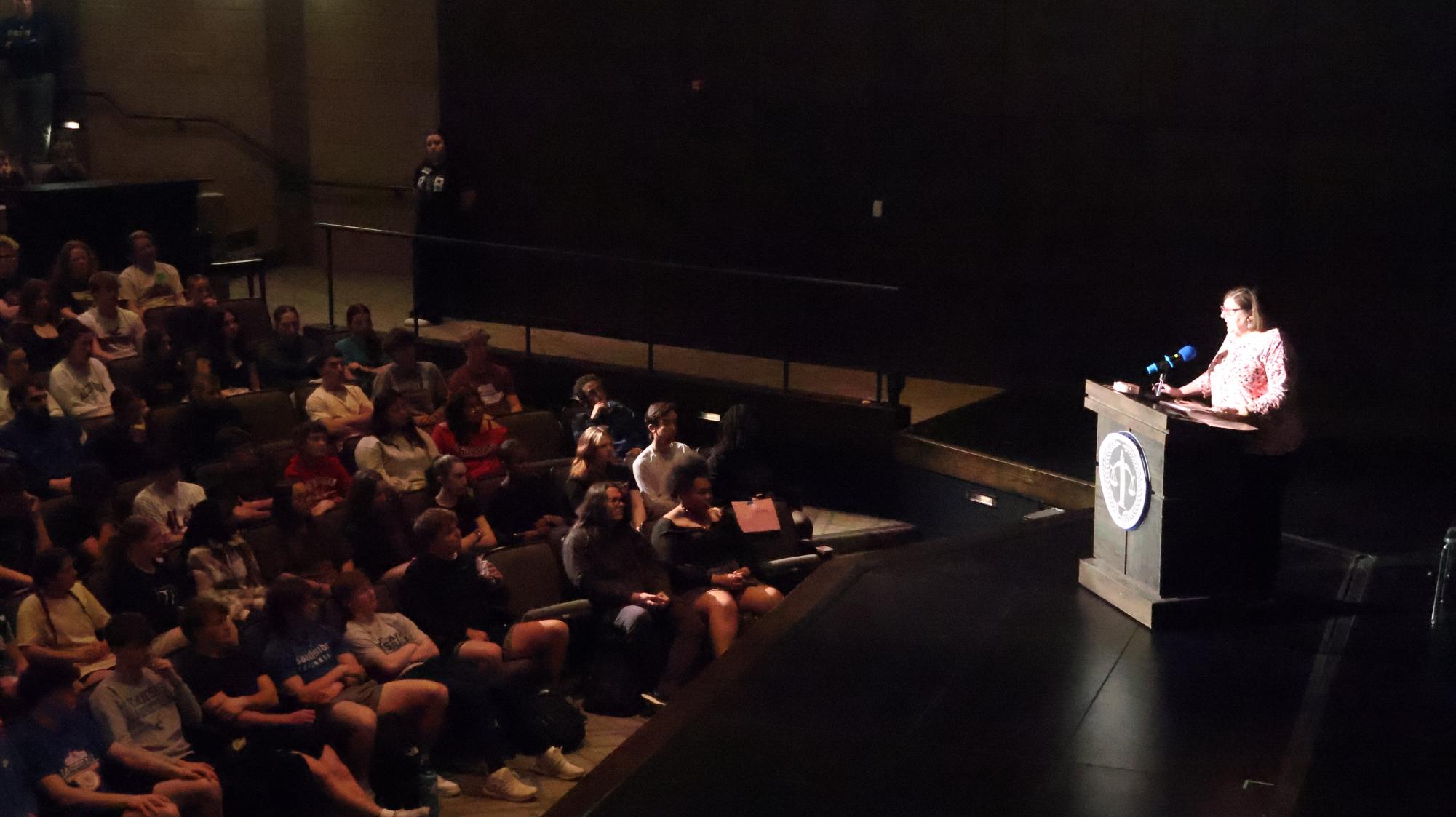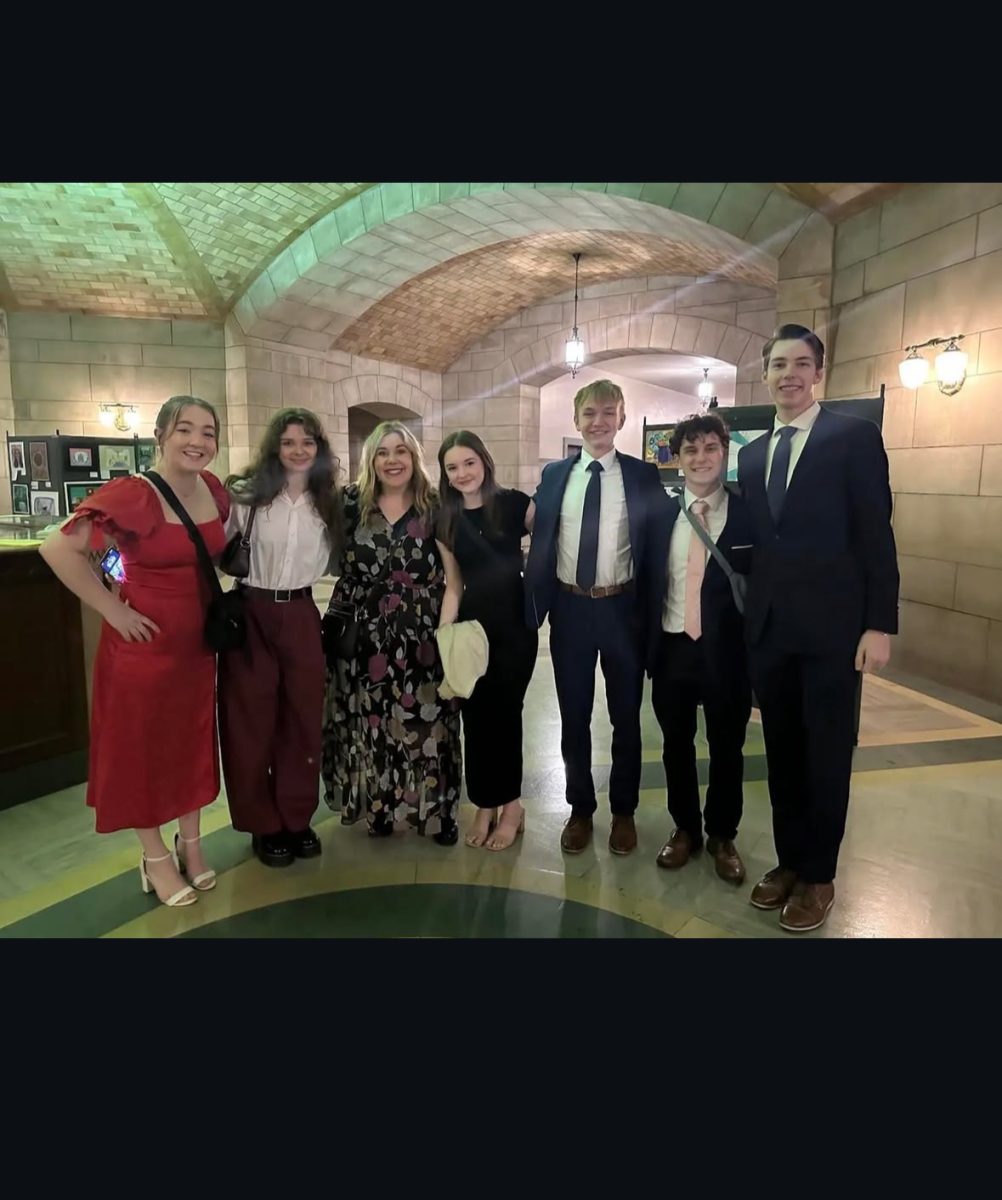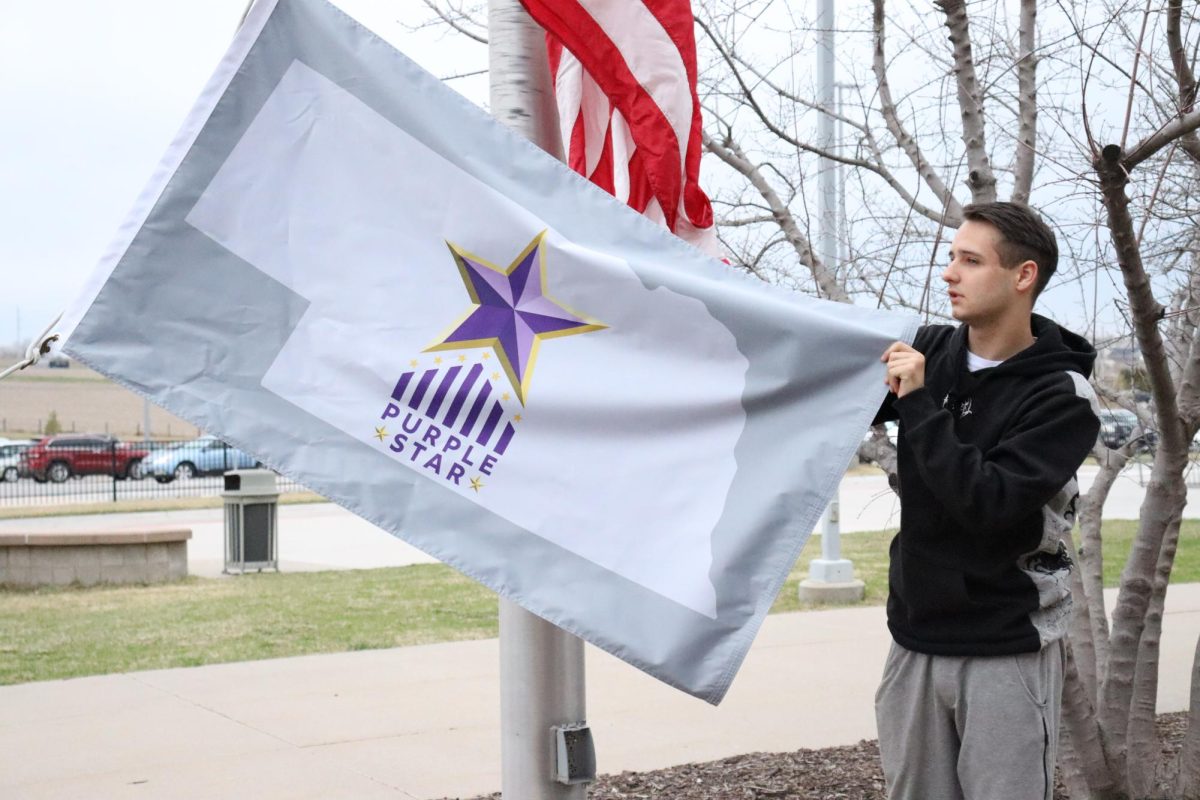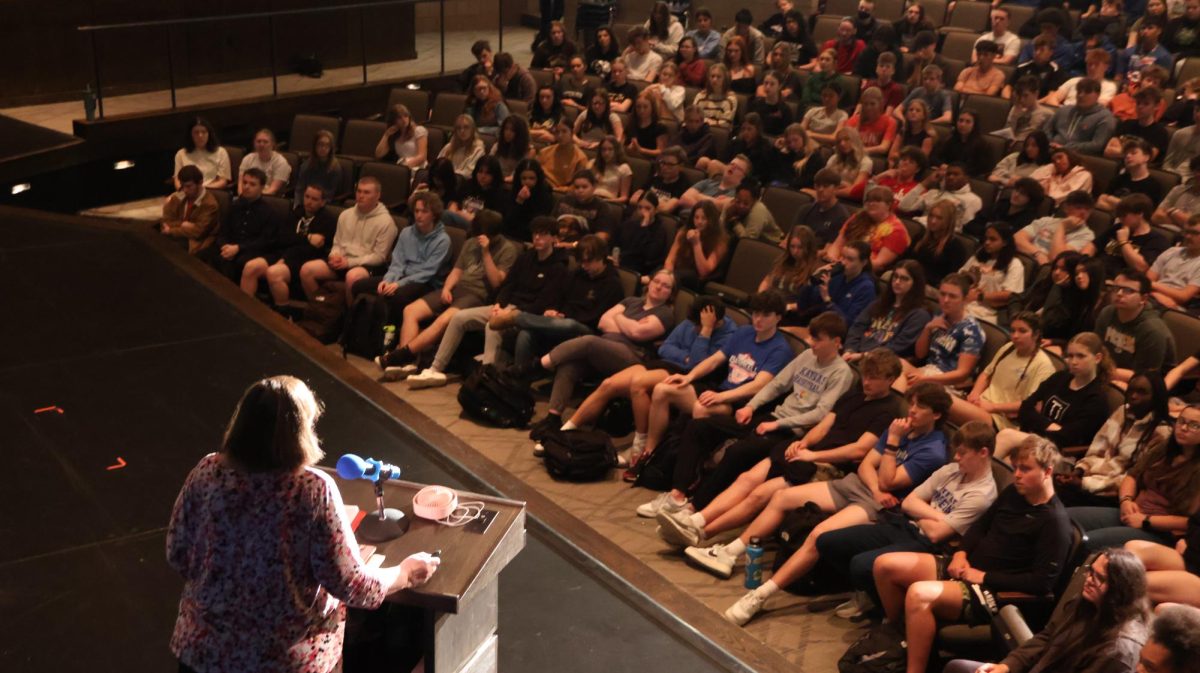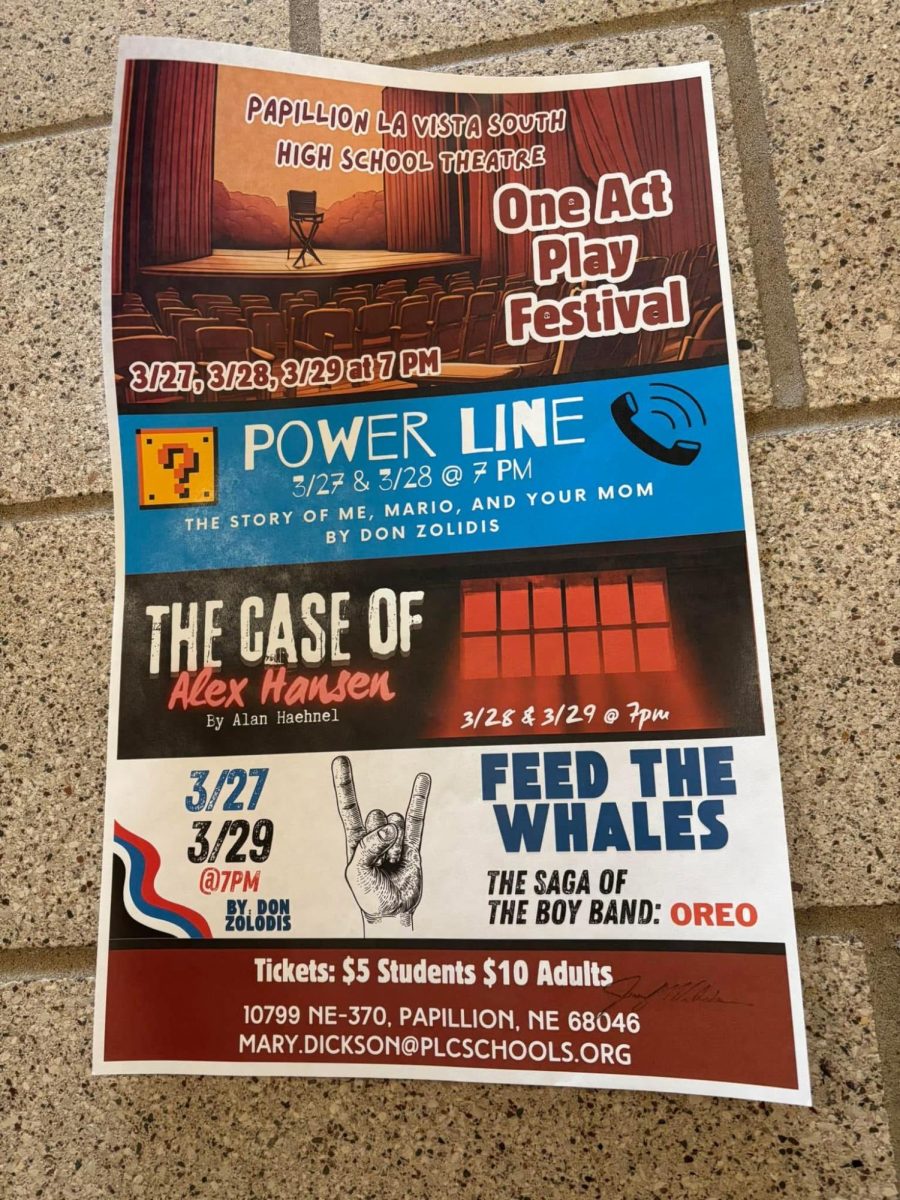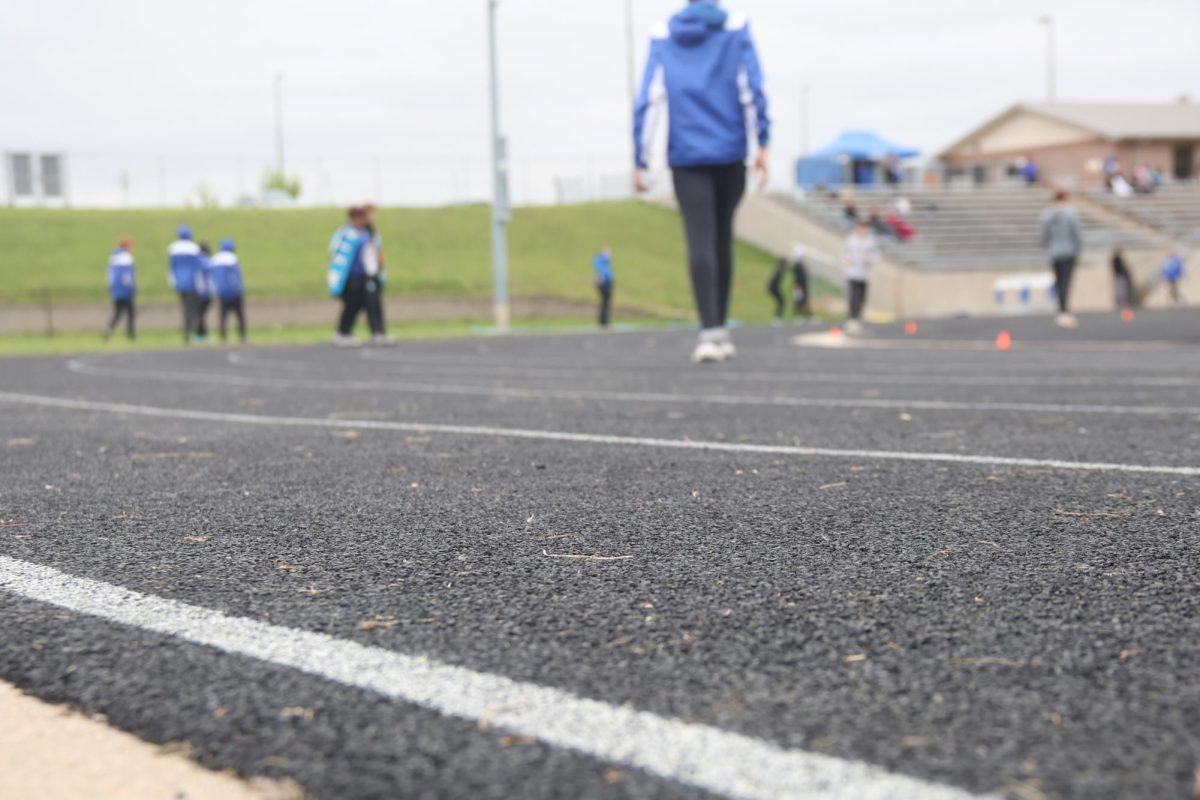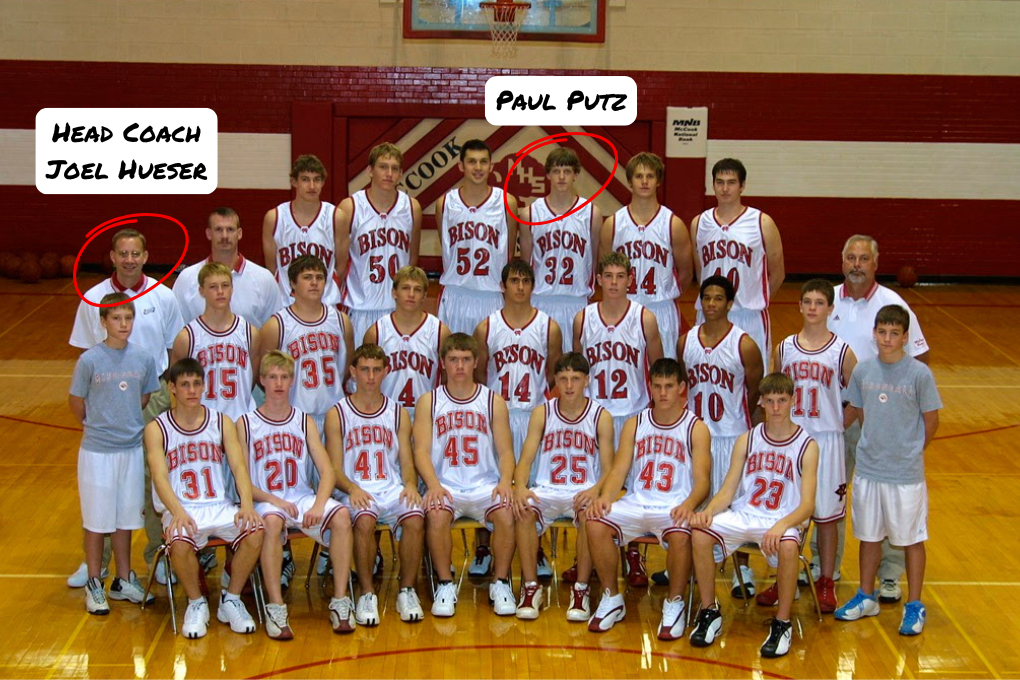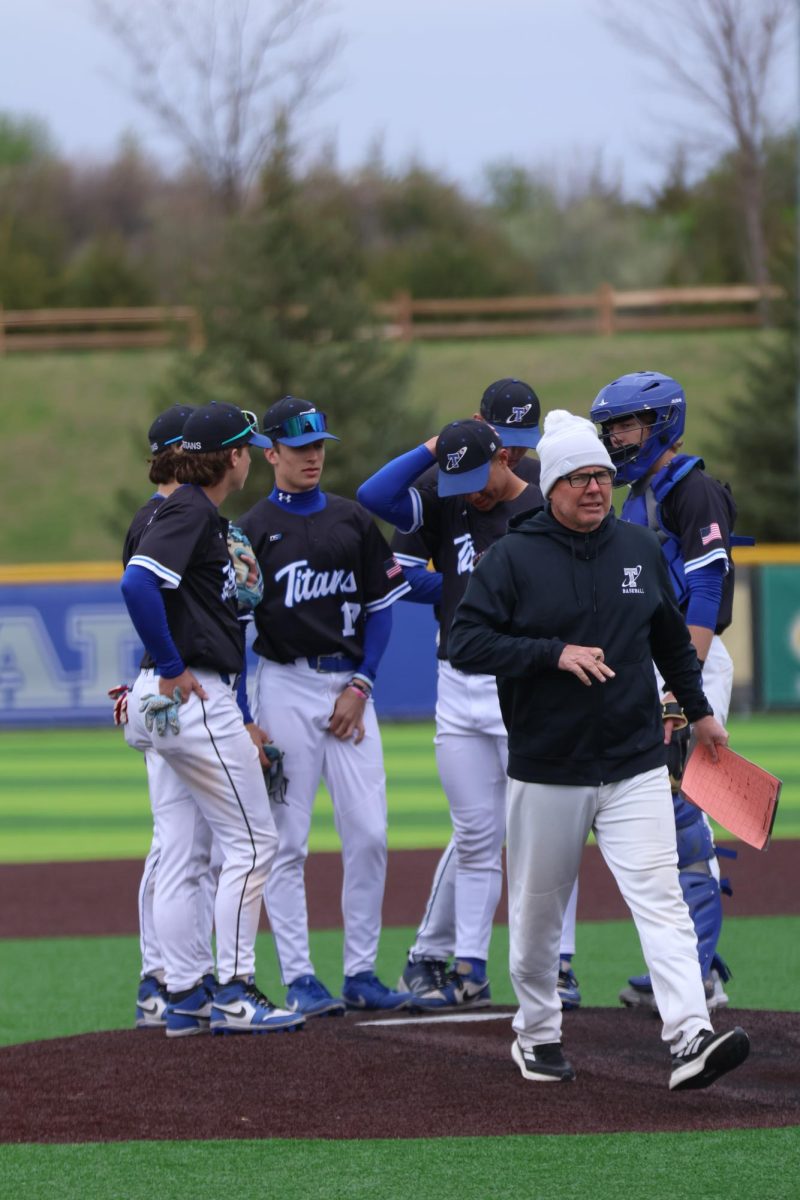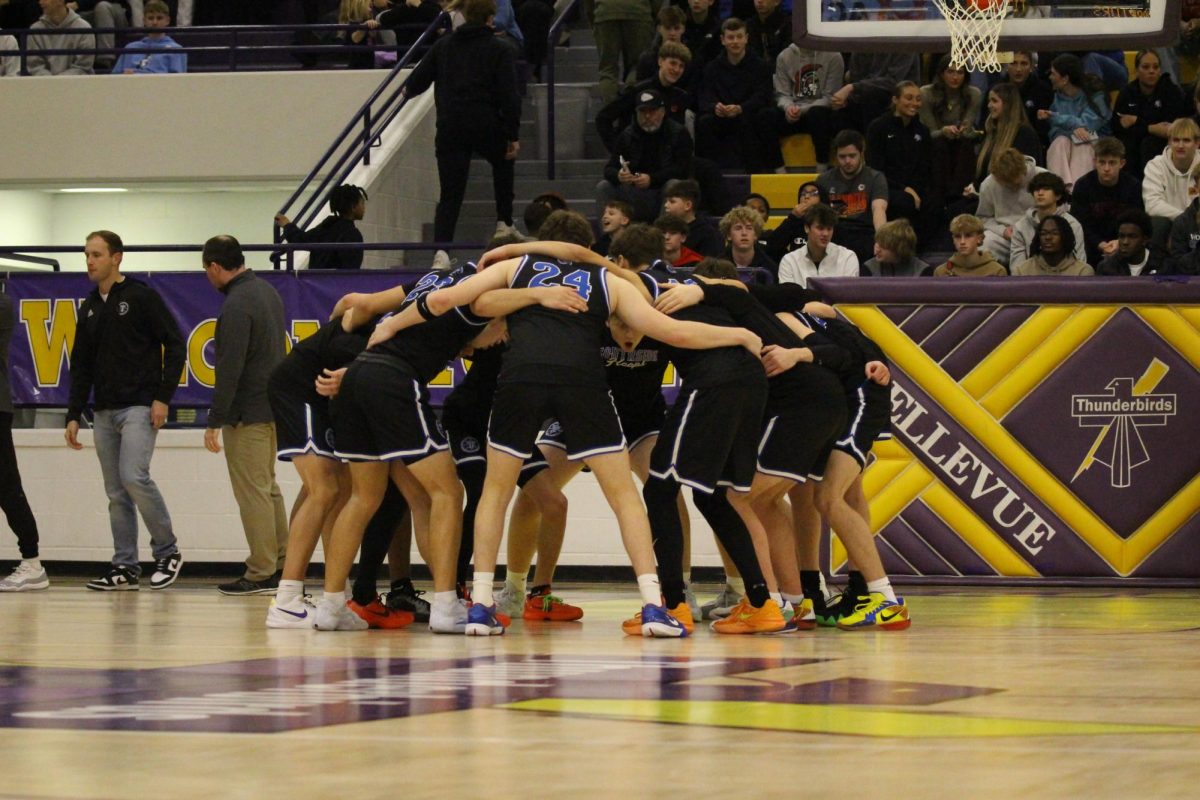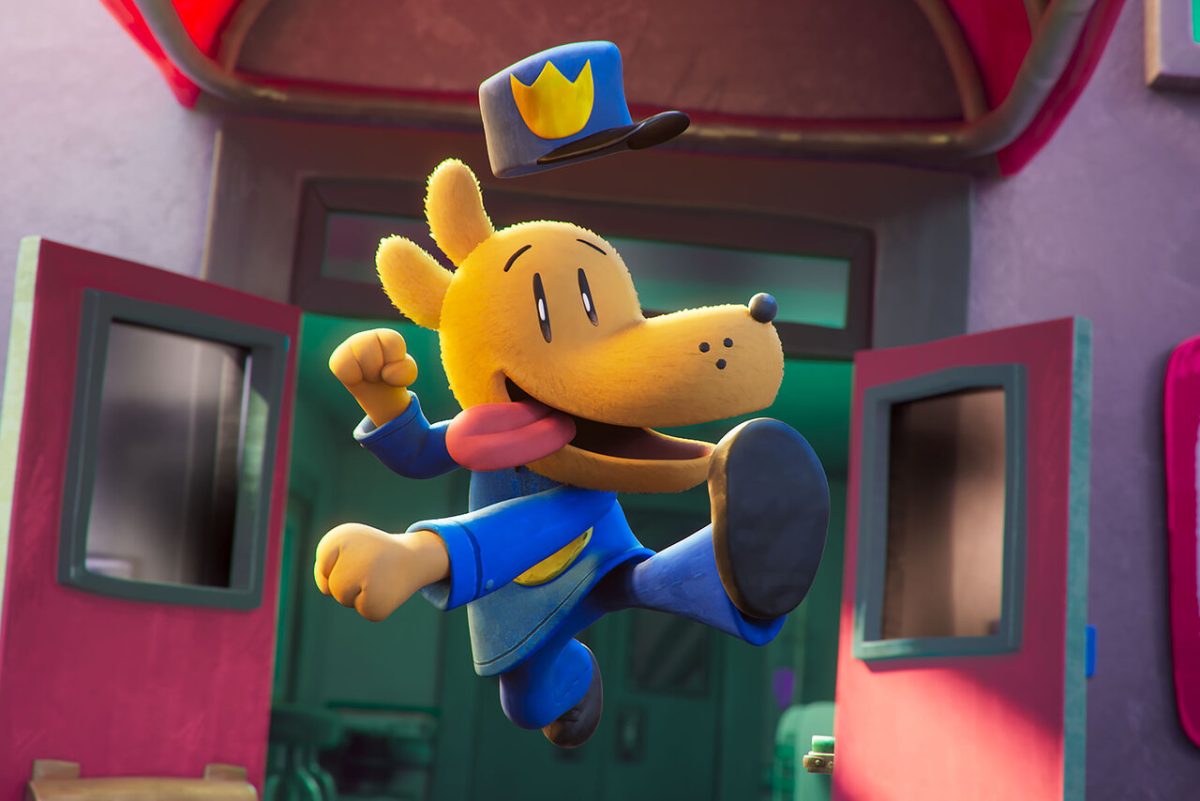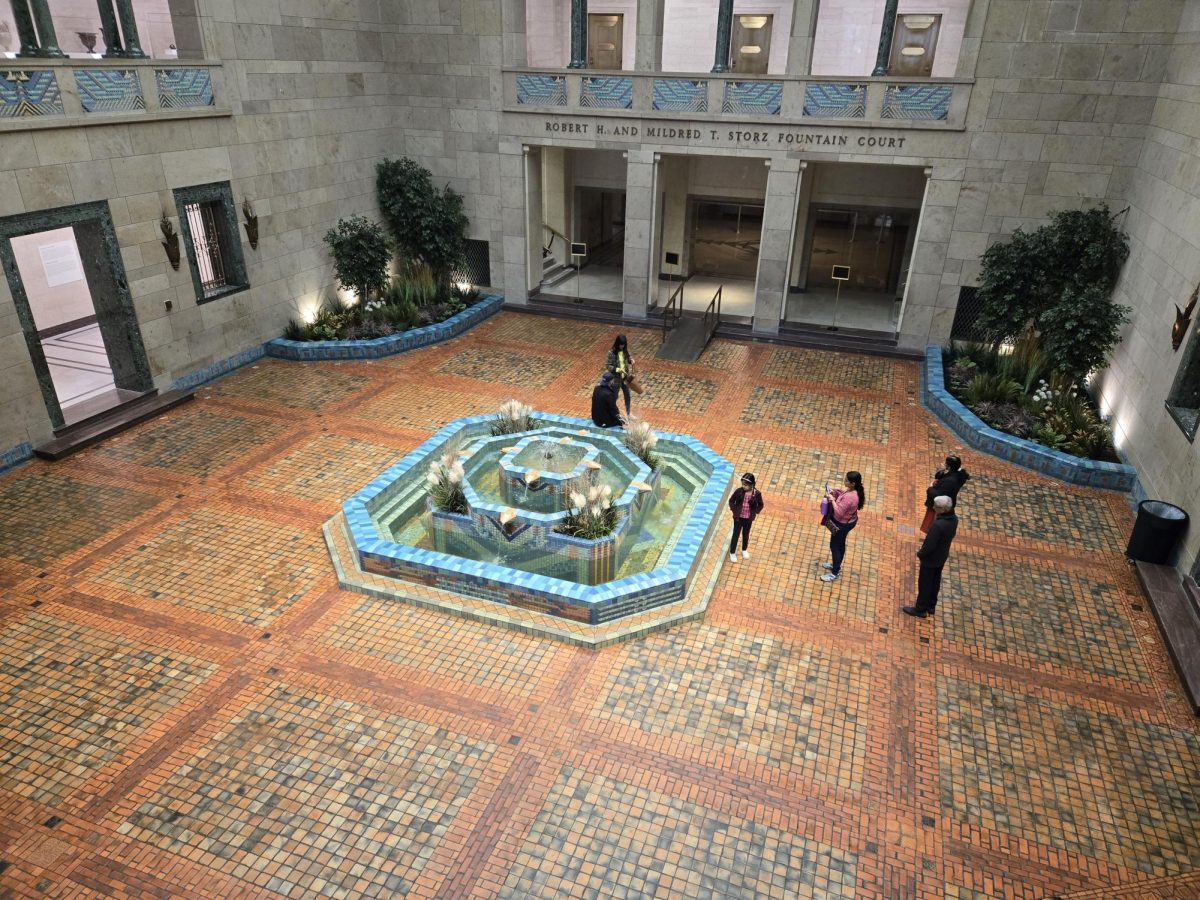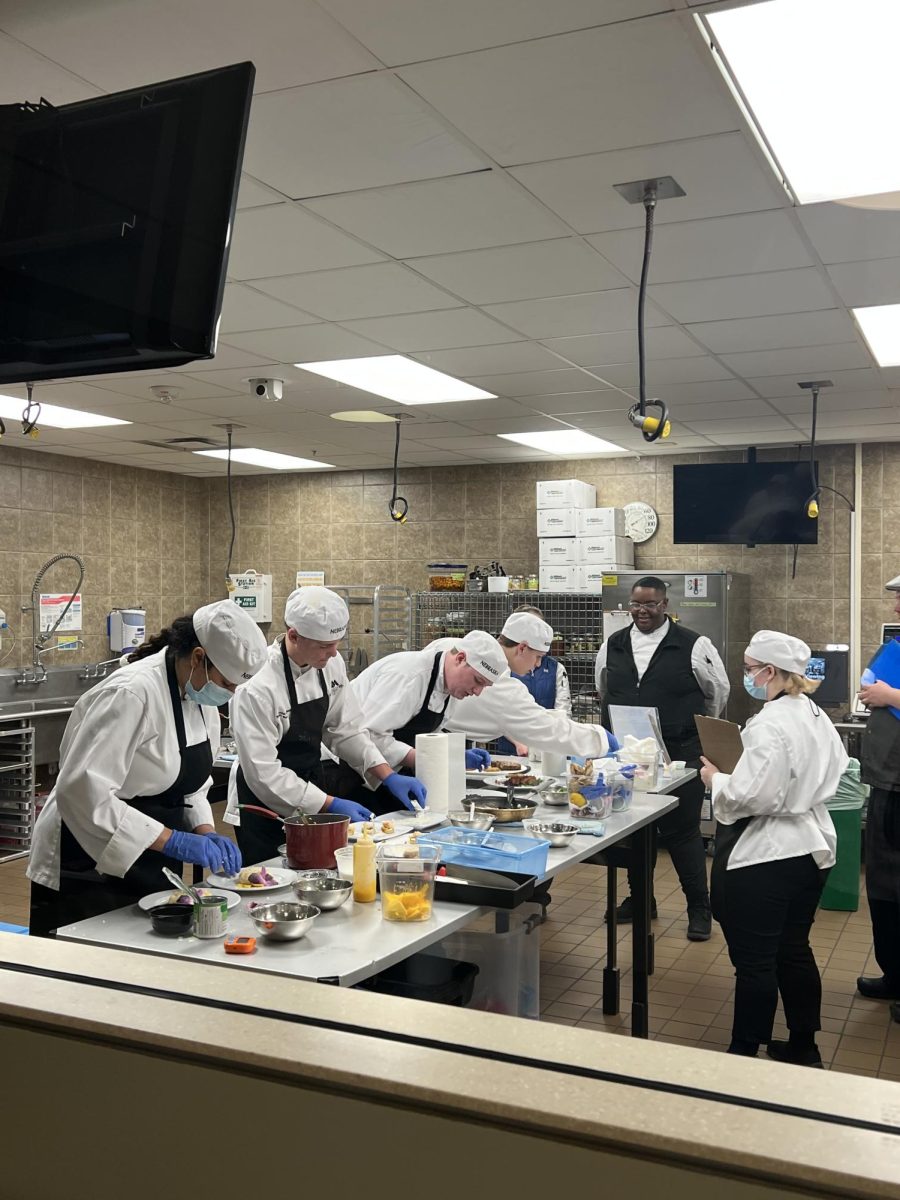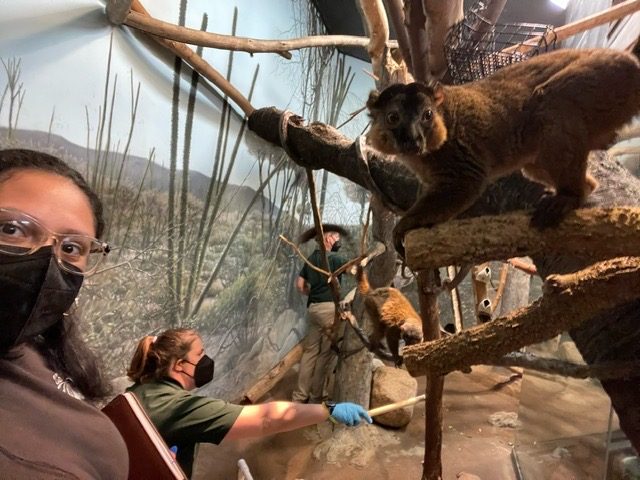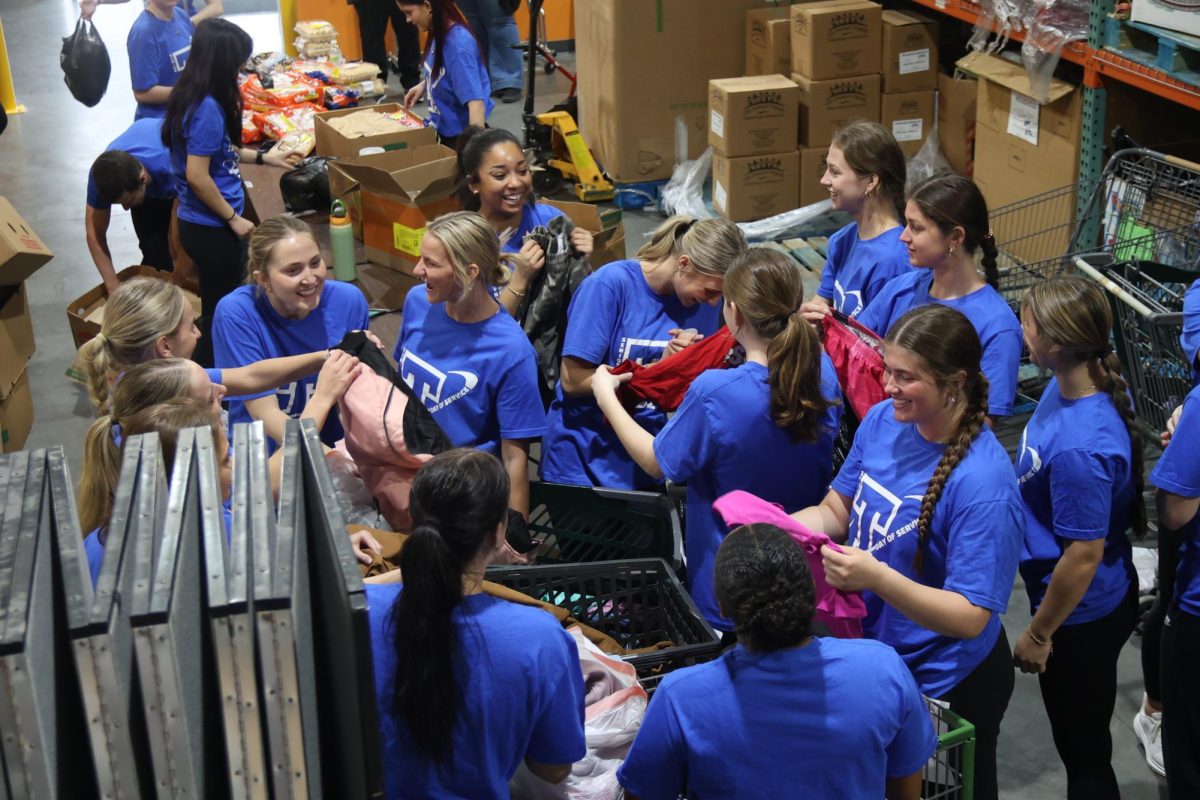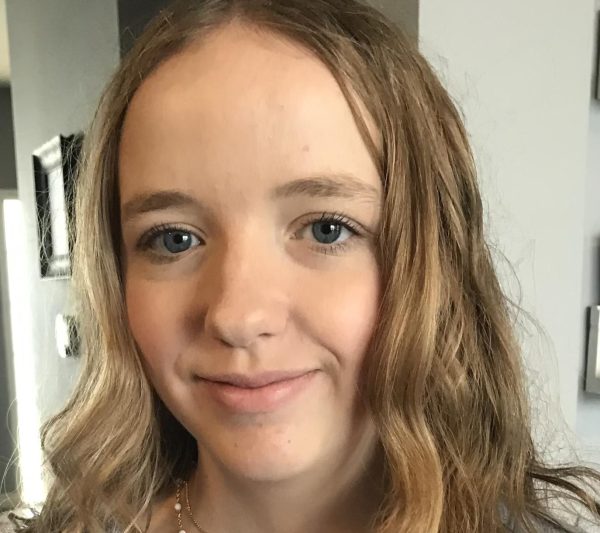On March 28, sophomores were granted the experience of hearing a horrific story of a strong woman: the story of Magda Brown, told by her daughter Rochelle. Magda passed away July 7, 2020, at the age of 93, but her story isn’t any less important. She was one of few survivors of the Holocaust, and her daughter Rochelle was here to tell us it all.
On Magda’s 17th birthday, June 11, she was removed and deported from her home in Miskolc, Hungary, all the way to Auschwitz-Birkenau with her family on one of the final transports. All the soon-to-be prisoners who were of Jewish belief were shoved into cattle carts presumed to fit only 25, but were compacted together as 75-85 people a cart. Many arrived to Auschwitz where they were in belief that it was just a work camp, but they were everything but right.
Magda Brown was separated from her mom, whom she never saw again. Her parents and much of her extended family were killed in gas chambers, where Nazis released poisonous gases into the air–and no chance of escape. Luckily, her brother stayed alive, but was the only family member to survive. Rochelle described to students the family’s circumstances when it came to eating, drinking, and even using the facilities. There were only two buckets, they were for water and the toilet. There were no signs of decency, it was all to publicly humiliate them. Some Jews would have to be stripped and there were no bathrooms, just rows of buckets where you could only squat.

They shared one mug split among five people. The food was terrible. Rochelle described it as a “soupy slop” that her mother did not want to eat. Magda had refused the food and even offered it to someone else; surprisingly, the person took it. She wondered why she seemed shocked to offer the food, little did she know it would be the last meal she had in a long time.
The sleeping facilities were questionable. Many laid on the floor–it was soon to be realized that shoes equaled pillows, and your body equaled your blanket.
Jewish women were often made as a fool of themselves. 500 women counted were used as a form of torture, as they’d have to stand in a long, horizontal line and get head counted–they’d even have to kneel sometimes. If the guards messed up or something was incorrect, they’d have to start all over again.
Rochelle informed students about the state many people were in: many had yellow skin due to the poison they were exposed to, they had orange hair, and even purple lips.
One day, Magda and other prisoners were forced to move transit into an unknown forested area, where they would make and close bombs for the Nazis. Guard dogs blocked the vicinity where no escape was presumed. Luckily enough, Magda was able to meet one sane person there, an officer — an officer who would display kindness, snuck her green apples, and even gave her hope and faith that there were still good people in the world.
Magda Brown and many other enslaved would sleep on a barn-like floor, unaware when or if they would ever sleep on beds again. She was tired of the treatment, and was tempting to escape. Before she could do anything, she was stopped by the only person who was able to give her a future, the nice guard. He gathered everyone together and helped them escape.
Rochelle made it clear that her mother owed that guard her life. As Magda Brown was now free, she didn’t know what to do, or where to go. She was orphaned with an 8th-grade level education, and the country of Germany didn’t know what to do with her now that she was free.
She was later placed into an old German couple’s house, where the first thing she did–was ate food. Her first form of “real” food consisted of a loaf of bread, doused from the bottom to the top in butter.
Another girl eventually got sent to the same home, she shared similar experiences and they often bonded over that. Eventually, she had found that her aunt and uncle were still alive; they lived in Chicago! They had found where Magda was, and sent two visas for her and her brother.
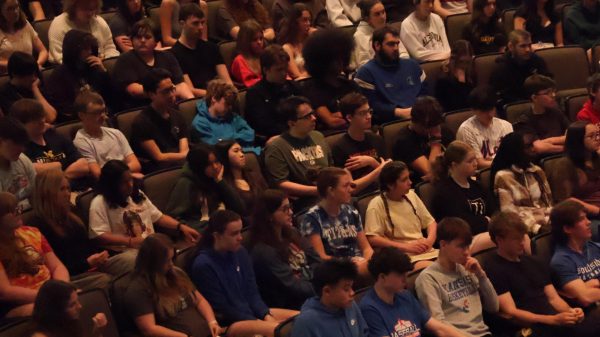
Magda, unaware her brother was still alive–made it her mission to find him. She was led to an airport where she searched for him, and they were finally reunited once again.
Magda Brown’s story is an important and beautiful representation of events that happened only 80 years ago. Before she passed away, Magda Brown would often attend events where she would tell her entire story to inform people of how life used to be for some, and how to never achieve it again.
Now, Rochelle fills in her spot and tells the tale of her mother, and how she survived the unsurvivable.
Writing for PLSouthside Scroll, I was luckily able to have Rochelle receive questions from me personally, about how this all affected her. Her answers, as well as questions from other students in our district, were retrieved and here’s what she had to say:
1. Who do you think was the biggest influence on your parents’ survival?
“That’s a hard question. It’s hard to answer because others may have also had these same influences and didn’t survive. For My Mom, I think it was because she was born with an extremely positive attitude which helped her to try to see the good and not only the horrible. She always believed that there were more good people in the world than bad. She was also raised in a religious home and her faith helped her to deal with things.”
2. What impact did the Holocaust have on your family’s traditions and beliefs?
“Another good question. Well, my brother and I were raised Jewish so we went to some after school classes to learn more about the religion and prayers. We had wonderful holidays with family and friends. The holiday traditions of Mom’s childhood were passed down to us. I feel like it made the traditions feel even more strong and worthwhile to keep them going in honor of the family that perished. In fact, the Jewish holiday of Passover starts this weekend and I am making some of my Mom’s recipes.”
3. How did the Holocaust shape Jewish communities around the world?
“I’ve never heard that question before. I am so impressed by these questions! What a great group of students! Living communities were formed; just like many ethnic, racial and other groups. People desire to live by people who go to the same church or temple; eat food that is similar and things like that.”
4. Has any part of your family’s history been recognized in public memorials?
“Yes, in Wilmar, Germany there is a 12 foot tall display with her picture. Also, in a traveling exhibit called ‘Lest We Forget’ – there’s another 12 foot tall picture that travels the world. It was the last seen in front of the United Nations building in France. Her story is part of the film being shown at the Holocaust Museum in Allendorf, Germany where she was in the munitions plant.”
5. How did your family adjust to life in a new country?
“It was challenging. Luckily when she arrived at her Uncle’s home in Chicago she was met by a loving, supportive family. She went to school and learned english. She became Americanized and became a proud citizen.”
